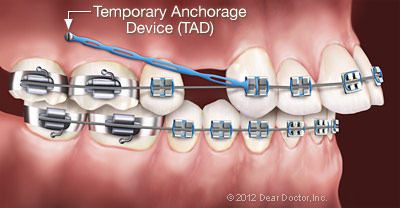


Corrective jaw surgery (orthognathic surgery) treats and corrects abnormalities of the facial bones, specifically the jaws and the teeth. Often, these abnormalities cause difficulty associated with chewing, talking, sleeping and other routine activities. Orthognathic surgery corrects these problems and, in conjunction with orthodontic treatment, will improve the overall appearance of the facial profile.
Using the latest in digital imaging technology, we will demonstrate the overall functional and aesthetic benefits of orthognathic surgery. Computerized treatment planning minimizes treatment times, recovery periods and the overall efficacy of your surgery. State-of-the-art materials such as titanium plates and miniature screws provide stability, strength and predictability to your treatment. These advances in technology, procedures and equipment reduce post-surgical recovery time, thus allowing patients to return to their normal routines soon after the surgery.
Each patient’s orthodontic condition requires a treatment plan based on a specialized diagnosis of the case. The treatment process involves X-rays, dental impressions and photographs. Braces have one aim: to use gentle pressure to move teeth into proper alignment.
Treatment time varies depending on age, patient compliance and the severity of the condition. Generally, treatment lasts for 24 months and is facilitated by ideal patient cooperation.

While it’s generally preferred, the use of teeth as orthodontic anchors in standard braces can have drawbacks in some cases. For example, there may not be a viable tooth located at the point where an anchor is needed. Also, when a greater force is required, the teeth used as anchors can themselves start to move. This is one instance where TADS are beneficial: These mini-implants can eliminate the need to use teeth as anchors, or stabilize a tooth that’s being used as such.
TADS can also provide an anchorage point for a pushing or pulling force that would otherwise need to be applied from outside the mouth: generally, via orthodontic headgear. Wearing headgear can be uncomfortable, and compliance is sometimes a problem. In many situations TADS can eliminate the need for headgear, a welcome development for many patients. The use of TADS offers other benefits as well: It may shorten overall treatment time, eliminate the need to wear elastics (rubber bands) — and in some cases, even make certain oral surgeries unnecessary. It also allows orthodontists to take on complex cases, which might formerly have proved very difficult to treat. This small device can really do a big job!
Like dental implants (which have been in use since the 1970s) TADS are small, screw-like devices that are placed into the bone of the jaw. Unlike implants, however, they don’t always need to become integrated with the bone itself: They can be fixed in place by mechanical forces alone. Plus, they’re much easier to put in and remove when treatment is complete. How easy? Placing and removing TADS is a minimally invasive, pain-free procedure.
After the area being treated is numbed (with an injection or other numbing treatment), a patient feels only gentle pressure as the device is inserted. The whole process can take just minutes to complete. Afterwards, an over-the-counter pain reliever can be taken if needed — but many patients need no pain reliever at all. And taking TADS out is even easier. So if you’re worried that it may be a painful procedure: Relax! It’s far less stressful than you may think.
While they’re in place, TADS require minimal maintenance. Generally, they should be brushed twice daily with a soft toothbrush dipped in an antimicrobial solution. We will give you specific instructions regarding maintenance when your TADS are placed.
Not every orthodontic patient needs TADS — but for those who do, it’s a treatment option that offers some clear benefits. To find out more, schedule an appointment with us today!
RE: COVID-19 (Coronavirus)
To our valued patients,
In order to prevent the spread of COVID-19 (Coronavirus), President Trump, the American Dental Association and the Hawaii Dental Association are recommending all dentists postpone nonemergency dental procedures for 2 weeks. Our practice is committed to protecting the community and avoiding using valuable resources that our first responders and frontline healthcare providers will need.
Our office will be closed effective today, Wednesday, March 18, and we plan to resume regular hours on Wednesday, April 1. If you are experiencing a true dental emergency including swelling or severe tooth pain, please call your general dentist office, and listen closely as emergency contact info will be available. For all nonemergent questions, please email us at [email protected].
We are so sorry for the burden this places on your schedules, but your continued health and safety are our number one priority. Our office is working diligently to reschedule all patients with existing appointments within the next 2 weeks. We will continue to evaluate the situation as it evolves and determine on a weekly basis when it is appropriate for us to return to normal orthodontic patient care. We ask for your compassion and understanding at this time as we all work together to keep Hawaii healthy.
Sincerely,
Your Morita Orthodontics Ohana